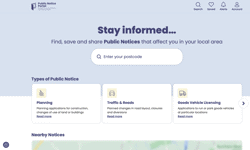It seems hard to believe, but we’ve entered our third decade living with the web as a publishing medium. An even more sobering thought is that in the 15 years or so since mainstream publishers started to experiment with online platforms, they’re still struggling to find viable commercial models.
Of course there are many examples of digital publishing success stories. Those such as Autotrader that recognised the potential threat to existing revenue streams and innovated early have managed to maintain – and in some cases improve - their market position in a mixed-platform environment. Others have found new audiences, advertisers and revenues thanks to the improved reach they can achieve when released from the constraints of print distribution.
Online underachievement
But look across the publishing sector as a whole and – notwithstanding the cyclical effects of the recession - the picture is grim. In most markets, both audience and yields are under pressure and, more often than not, digital is a big part of the problem rather than the solution.
This is not to say that there isn’t big money being spent online – it’s just not going into the traditional publishers’ pockets. In fact, according to the IAB, online advertising in the UK grew by 10% in the first half of 2010 and looks set to break the £4bn barrier across the year as a whole. This accounts for a record market share of just under 25% of all advertising revenue in the UK. But with £1.18bn of this going to paid search – dominated by Google – and the fastest growth being seen in social media with the likes of Facebook and Twitter and in video advertising, it’s clear that traditional media players are failing to punch their weight.
But there is another equally significant problem. In an era of freely accessible, high-quality online content, publishers have seen the value of their crown jewels – their editorial and data assets – seemingly diminish. Of course some – not least Rupert Murdoch - would argue that the publishers have been the architects of their own doom by rushing to provide free online access to this material. But this ignores the issue of how content owners are supposed to compete with online providers playing by different rules. Back in the mid nineties, I remember being frustrated by the difficulty and cost of trying to get access to Ordnance Survey mapping data. Then along came Google Maps and the world literally changed. As of April 1, 2010 (someone in Government has a sense of humour) the OS data that used to be so expensive and proprietary has been freely available to anyone who wants it.
Paywalls
Of course, publishers have tried to fight back, led into battle by the rallying cries of Mr Murdoch and the battlements have gone up in the form of the supposedly impregnable paywall. But will these ramparts be strong enough to halt the marauding hoards streaming towards them under the banner of the freeconomy? Somehow I doubt it.
This is not to say there isn’t an important place for gated content in the overall mix. Indeed at Abacus, we’ve been working with clients such as Emap and UBM to restrict access to some of their content and generate improved subscription revenues. These are important steps towards building a long-term business model for online but they won’t be enough. And whereas B2B players can fall back on the specialist and proprietary nature of their content, it’s harder for B2C publishers. According to global metrics specialist comScore, the Daily Mail is set to become the world’s biggest online newspaper brand, helped into the top spot by the New Year introduction of a paywall at the current number one, the New York Times. This suggests that the free model has some way to run yet.
In any event, the key challenge facing media companies today is how to generate serious revenue from the web via whichever access model proves most effective. I believe that the key to solving this problem is understanding and leveraging the mass of information clients and prospects supply every single day. And our recent experience developing paywall solutions has shown the importance of understanding audience behaviour in developing a successful commercial strategy.
Customer data
Using customer data as a fundamental ingredient in the product development process is absolutely critical. But it is not easy. To appreciate this challenge, it is essential to understand the profound change that the sector has undergone in recent years thanks to the explosion of publishing platforms and products. Where once there might have been a standalone print publication, now there are multiple product streams for every brand including face to face, web and mobile as well social media and data services.
And as these delivery platforms have proliferated, there has been an exponential increase in the number of transactions and interactions with the audience. Such interactions might include web page visits; the purchase of a subscription; attendance at an event; participation in market research such as an online survey; comments left in a forum; demographic data supplied during a registration or even social bookmarking. If information about these transactions can be linked in a meaningful way and patterns of behaviour analysed across them, then publishers can begin to build up a very powerful insight into their customers’ profiles and their needs.
The problem is that all too often, the publishers’ data is inaccessible or disjointed. And it’s not good enough to simply ‘warehouse’ billions of transactions in the hope that you can find some way of ‘extracting’ the value. In most cases, the raw data is pretty worthless. It always amazes me how many times I am presented with web stat reports containing hundreds of individual data points and dozens of graphs most of which are pretty to look at but ultimately pointless. As with any data, it’s about how you join the dots to create something meaningful.
Actionable intelligence
A key phrase is ‘actionable intelligence’. If you can isolate consistent activity patterns amongst groups of demographically similar users, then you can feed this information into your product development thinking. For example, if all the chief execs in your audience spend a lot of their time looking at salary surveys, you’ve got a pretty good idea of the type of functionality or content that’s most likely to appeal to them.
Publishers should start to think and behave far more like Tesco. Retailers really understand the value of collecting data about customers via their loyalty cards and then using the information they’ve gathered to tailor offers and benefits to suit the individual customers. In the web sphere, think of the elegant effectiveness of Amazon’s ‘you bought this, so you might like this’ approach to see a demonstration of how publishers should be thinking.
But this is easier said than done. A key issue that needs to be faced is the relationship with some fulfilment bureaus working with systems and mentalities that are entirely print focused and that cannot cope with the pace of this type of product development. On more than one occasion, our clients have had to hold launches while their fulfilment houses ‘hack’ legacy systems to facilitate the support of new online products. This is a completely unacceptable state of affairs.
And of course there is always the vexed issue of who ‘holds’ and is responsible for the master data. As well as negatively impacting the product development cycle, this has huge implications in terms of compliance. After all, it’s no good having access to the data if you can’t be sure you have the permissions or right to use it. Of course there are important legal and compliance issues around opt-ins and data protection to be considered. But while these shouldn’t be understated, I think it’s even more important to consider the sensitivities of your audience.
You only need to look at Facebook’s recent tribulations to see how much damage can be inflicted on a strong brand when it gets it wrong. However, I believe that audiences will volunteer phenomenal amounts of data and accept responsible data mining providing the outcome adds value for them – look at LinkedIn. Clients won’t tolerate indiscriminate spamming but they will accept data sensitively used to create products mapped exactly to their needs.
Data integration
So it seems clear that to be able to take advantage of these significant opportunities, publishers are going to need to rethink their processes and rebuild their systems – making audience development the primary objective rather than an afterthought. But how can this be achieved given the legacy of existing systems and a challenging economic environment?
The first point for a systems provider to grasp is that you cannot start with any presumption that you are going to be able to control all of the data all of the time. Certainly the systems Abacus provide such as CMS will only hold a fraction of it and as well as the publisher’s own systems – back office, analytics etc – there are likely to be many third party inputs.
So any practical approach has to be centred on data integration. All too often, this gets treated as a peripheral issue to be dealt with at the end of a project. We believe you have to put it front and centre.
You then need to combine this with an approach that delivers a master data set based around elements that have to be unique – an individual customer can only exist once regardless of how many times they move company, change address or email. Likewise a building can only exist in one physical place. These types of details form the bedrock of a data integrity strategy. Once you have such a structure in place, you can use data profiling techniques to guarantee quality.
By using these techniques, you get away from the clumsy, inefficient and inaccurate process of trying to map fields from disparate databases and instead develop a strategy based on ensuring accuracy. Only such an approach will allow the publisher to leverage the massive growth in audience transactions that I described earlier.
A set of tools can then generate a complete and accurate ‘customer view’. Powerful analysis and reporting functions using denormalised data structure as well as business intelligence tools can then be used to allow audience groups to be recognised and segmented. This segmentation allows full analysis by demographics and profile, spend and activity (whether online or offline). Audience groups can be ‘sliced and diced’ and this data be fed directly into the development process, so content and services can be designed to meet specific needs. And because the target group has been precisely identified, the new product can be marketed directly via mail, email, contextual triggers or online advertising.
The critical thing is that at every stage, the audience interactions and transactions – the data the publisher gets from their clients – informs the development process. This approach is the route to successful products and highly profitable online businesses.










